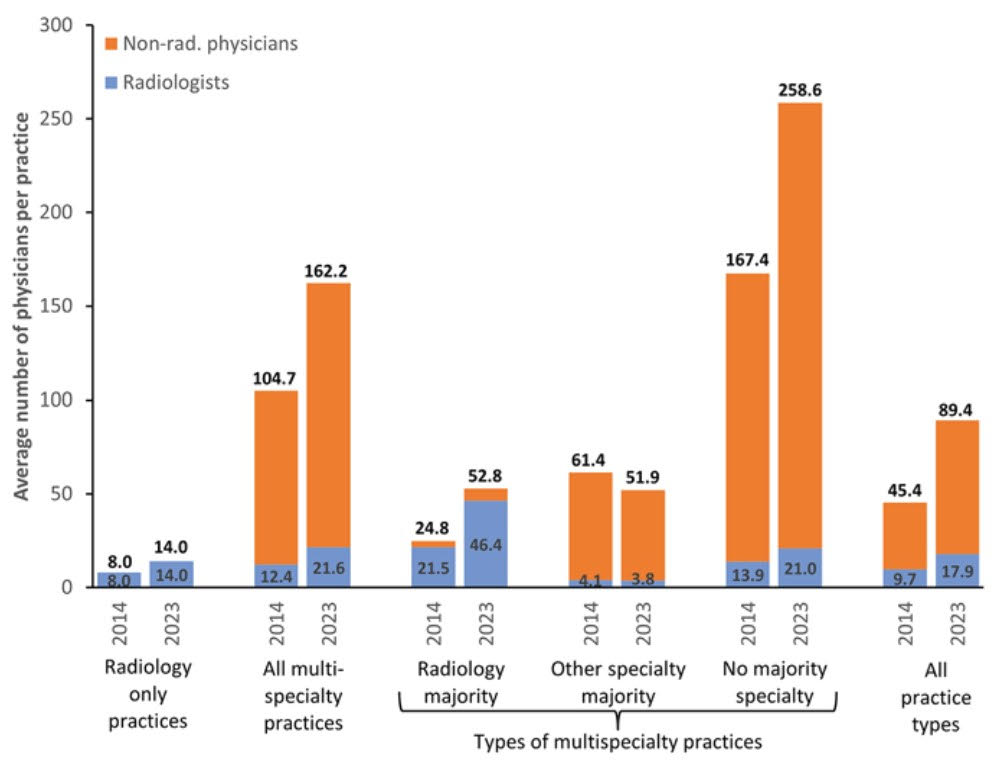Radiology Practice Consolidation Facilitates Subspecialization and Payer Negotiation
Images

Continuing consolidation of radiologists into larger and/or multispecialty practices could facilitate subspecialization as well as improve negotiating power in payer contracting, according to a study published in the American Journal of Roentgenology (AJR).
“An overall decrease in the number of radiology practices and concurrent growth in the number of radiologists was mirrored by shifts from small toward large practices and from radiology-only toward multispecialty practices, consistent with ongoing practice consolidation,” noted Eric W. Christensen, PhD, from the Harvey L. Neiman Health Policy Institute in Reston, VA.
In the manuscript, Christensen and colleagues used CMS data from 2014 to 2023 to identify all radiologists nationally along with their affiliated practices. Practices were then categorized based on the specialty mix of all affiliated physicians as radiology-only or multispecialty. Multispecialty practices were further categorized accordingly: radiology-majority, other-specialty-majority, or no-majority-specialty. (Practices that ceased to operate—absent within CMS data—were also identified.) To infer consolidation patterns, Christensen et al. assessed temporal shifts.
Ultimately, the number of radiologists increased 17.3% from 2014 to 2023. Meanwhile, radiologist-affiliated practices decreased 14.7%, radiology-only practices decreased 31.8%, and radiologist-affiliated multispecialty practices increased 12.3%. The number of practices with 1–2, 3–9, 10–24, 25–49, 50–99, and ≥ 100 radiologists changed by -18.7%, -34.4%, -25.2%, 33.2%, 121.6%, and 348.5%, respectively.
“While determining causes of consolidation were beyond this study’s scope,” the AJR authors added, “the shifts may relate to economic incentives and legislative changes favoring large multispecialty practices.”